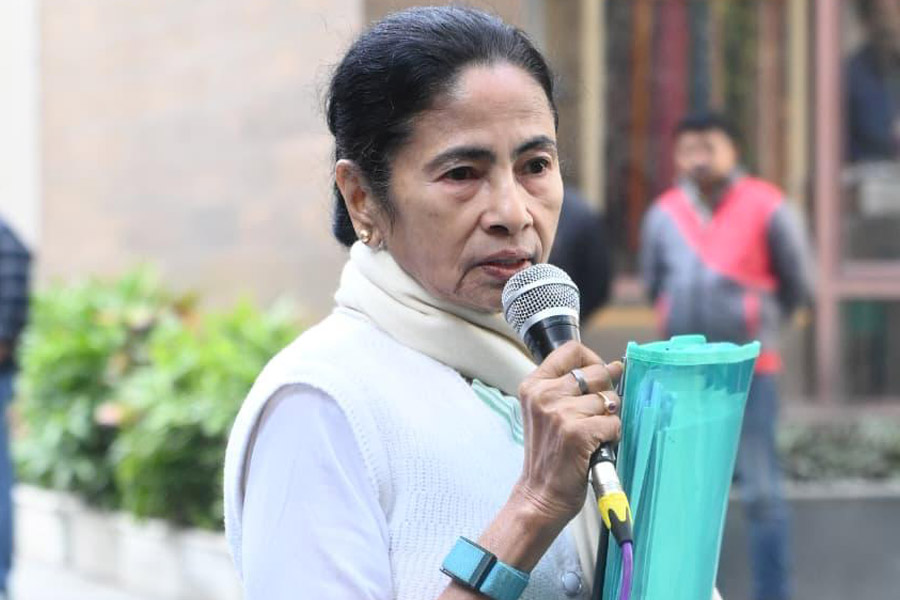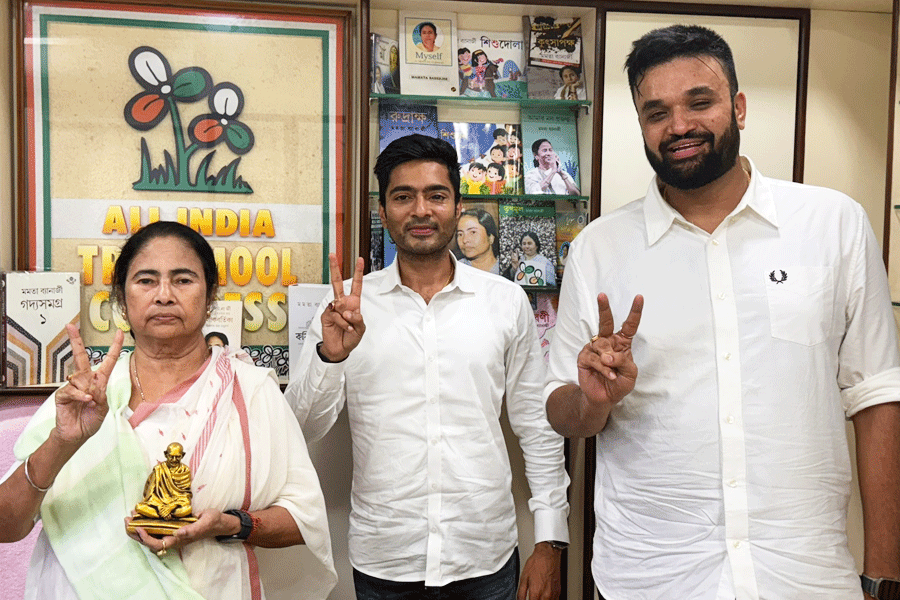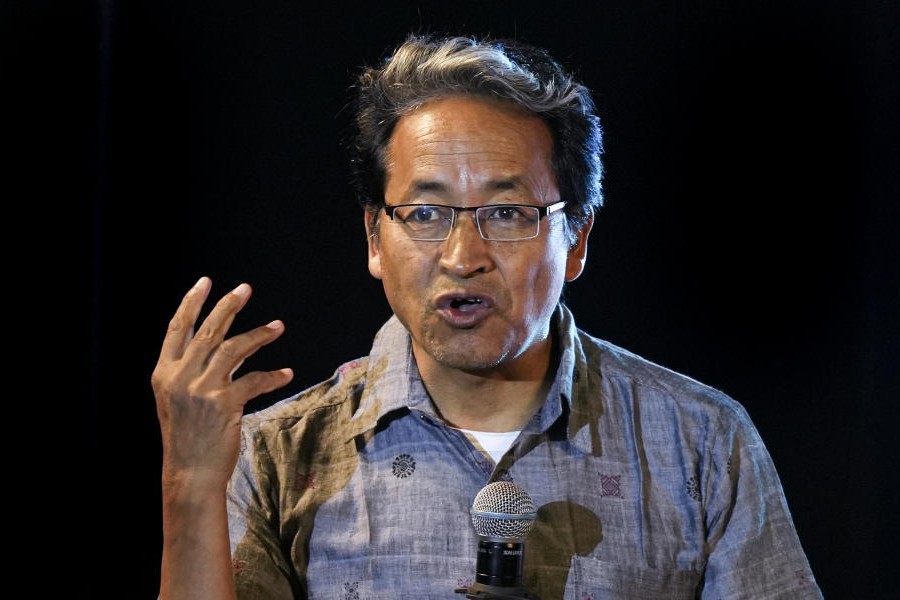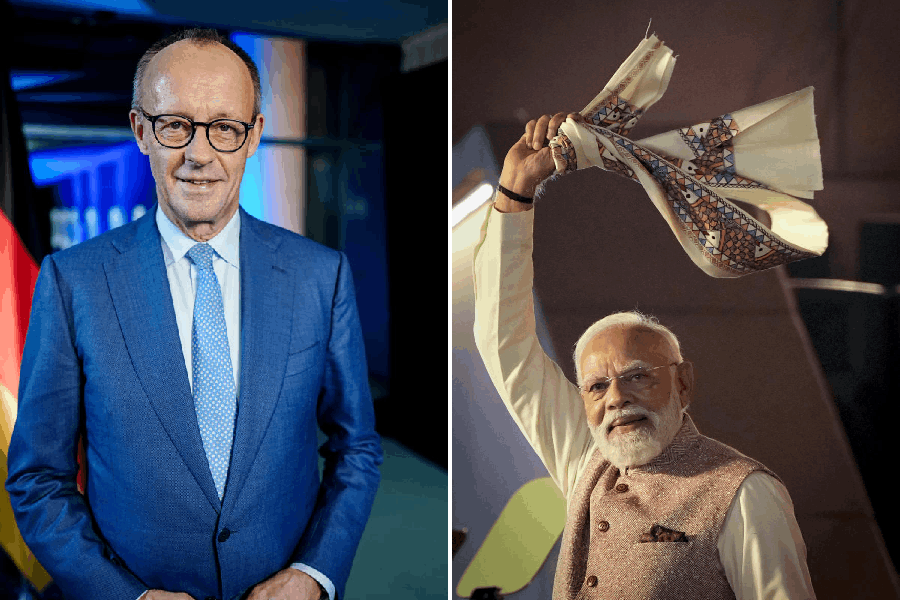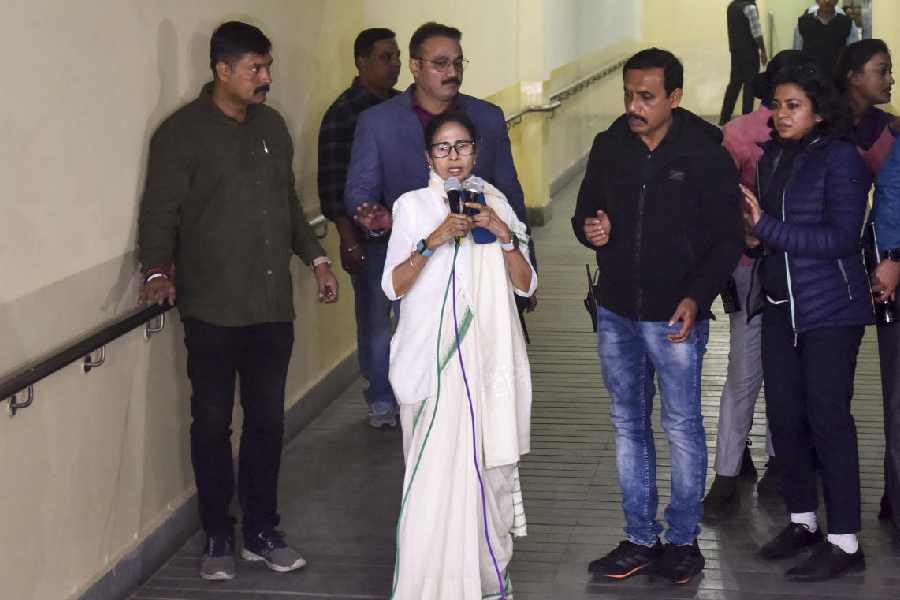|
|
| Lady-killer |
I refrained from writing about Gulzar as I know next to nothing about movies, and he is essentially a producer of films and a composer of film lyrics. At his invitation, I did see his film, Maachis, based on the 1984 anti-Sikh violence, focusing on the nefarious role played by the Congress leader, H.K.L. Bhagat. I was impressed by Gulzar’s superb craftsmanship and by the lyrics he inserted into the film. I knew no more about him till I received an illustrated and detailed biography from Zafar Hassan, a Pakistani businessman, based in Lahore and Karachi. The Art and Achievement of Gulzar gives a detailed account of Gulzar’s life from his childhood to his triumphant rise in Bollywood, with pictures of the broken-down haveli in which he was born, of Meena Kumari who was his lady friend for some years, of his wife, Rakhee, and his daughter, Meghna.
Gulzar’s original name was Sampooran Singh Kalra. He was born in the village, Dina, in the Jhelum district of today’s Pakistan. He was the son of Makhan Singh through his second wife, who died soon after giving birth to him. Sampooran spent his childhood with his step-brothers and sisters from his father’s other two wives. The family was initially one of doodhwalas, selling milk from door to door. Then they took to buying and selling cloth. They moved to Delhi. Sampooran went to Bombay to stay with his step-brother. For a while, he worked in a garage patronized by the film director, Bimal Roy, then engaged in making Bandini. He was having trouble with his music composer. He asked Sampooran Singh to compose some lyrics that he needed. Sampooran’s first foray into films began with Mora gora ang lai. It became an instant hit. He realized be could not succeed as a poet until he changed his name. So Sampooran Singh became Gulzar.
Looking at his photographs, one would not think that Gulzar was also a lady-killer. But some of the most beautiful women of the time fell for him. The best known among them was the ravishing Meena Kumari. After some years, she ditched him for Dharmendra. Then came the equally beautiful Rakhee, who bore him the lovely daughter, Meghna, now on the way to becoming a mother herself. Women in Gulzar’s life complained of his being aloof and seeking solitude. All poets and writers crave for solitude and make bad companions.
Zafar Hassan’s biography does not touch upon Gulzar as a poet. For that I had to turn to Sudeep Sen’s Aria. One poem, entitled Sketch, is as follows:
Do you recall the day/You sat at my table..../ On a cigarette pad,/ A small sapling’s/ Sketch you had made/Come here, see…/On the plant now, flowers appear.
The other, entitled Ash, reads:
Behind bars, even the rebel’s eyes/ Ash has begun to shed/ When coal embers remain unfanned for long — / Then even in the flame’s eyes/ Pearl white cataracts start to appear.
Unrecorded saga
The death of Uma Anand (née Chatterji) on Friday, November 13, brought back memories of my Christian friends in pre-Partition Punjab. Uma was the daughter of Professor Chatterji of the Government College, Lahore. She married the film producer, Chetan Anand, and bore him two sons. Later, she married Ebrahim Alkazi, producer and arts collector. Her brother, Tiny Chatterji, rose to become the director general of All India Radio.
Punjabi Christians were divided into three classes, which had little to do with one another. The aristocracy comprised the daughter of Dalip Singh, the last Sikh maharajah who converted to Christianity in his early teens. The aristocracy included descendants of Raja Harnam Singh of Kapurthala. His sons and daughters included Maharaj Singh, later governor of Bombay, Sir Dalip Singh and Rajkumari Amrit Kaur, disciple of Mahatma Gandhi and minister in Jawaharlal Nehru’s cabinet.
The second class consisted of civil servants and educationists: Mangat Rai, the first Indian to become the commissioner of the income tax department, his daughter Priyobala, who became the first Indian principal of Kinnaird College, Brigadier Raj Mangat Rai, now settled in Canada, Nirmal Mangat Rai, ICS, who married Champa, daughter of Shoren Singha, registrar of the Punjab University, and then Nayantara Sehgal. He died a few years ago in Dehra Dun. There was Professor Lal of Forman Christian College, his son Karl of the Railways, Arthur and John, both of whom got into the ICS, and Rallia Ram, a prominent figure in the Indian National Congress, whose daughter, Lajwanti, married Mohammed Yunus, later our ambassador to Spain and head of the Trade Authority of India. My closest friends were Wilburn and his wife Usha. Wilburn was an all-India athlete working for an American oil company. One of their daughters was jailed by Indira Gandhi during the Emergency.
The third category of Punjabi Christians were village folks, largely Dalits, who converted through the efforts of American, English and Indian missionaries. However, Sadhu Sunder Singh, who was recognized as a saint, was a land-owning sardar who gave up his possessions to walk the Hindustan-Tibet road alone. He was said to communicate with wild animals. He disappeared from the scene, no one knows when. And then there was the Salvation Army (Mukti Fauj), often seen marching in formation around Lahore.
With Partition, the upper two classes of Punjabi Christians were much discriminated against and persecuted by mullah-minded Muslims. The history of Christian presence in Punjab is yet to be recorded.



